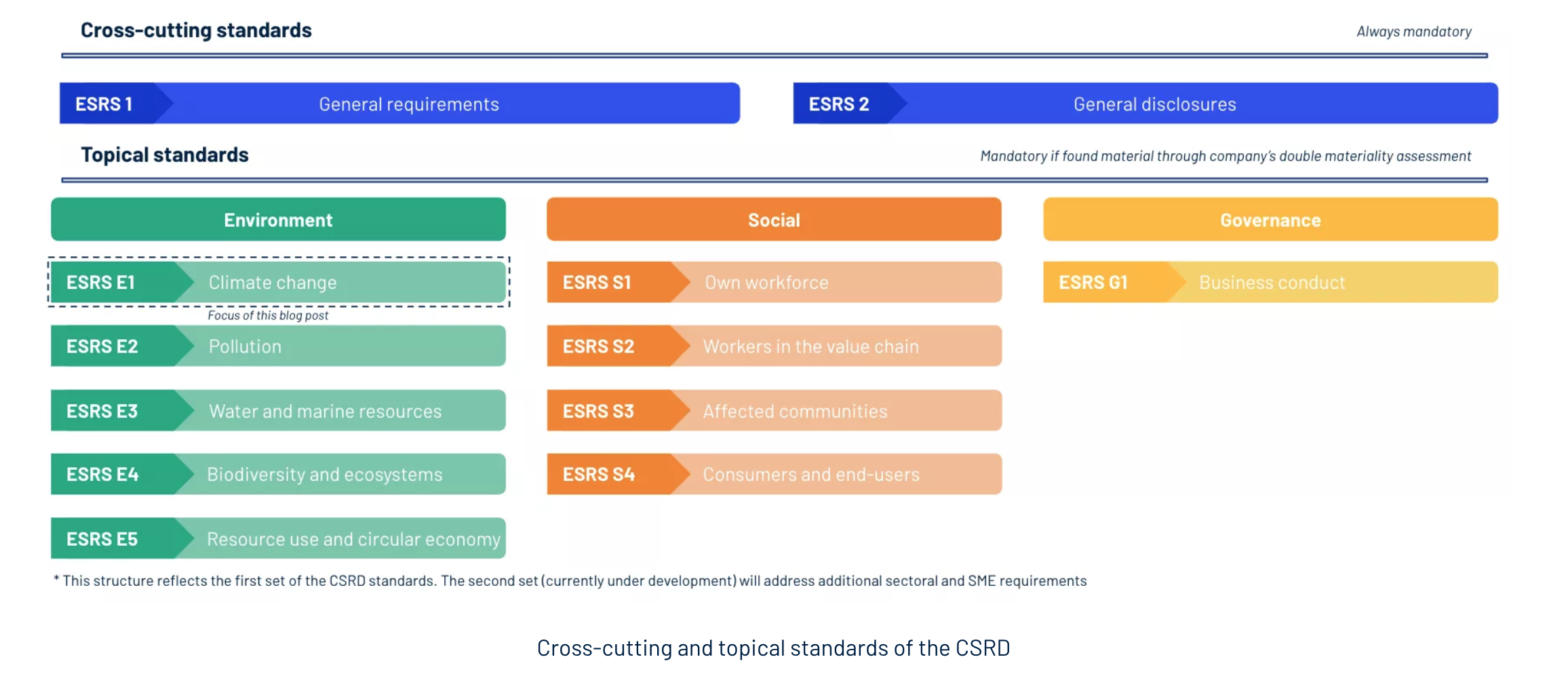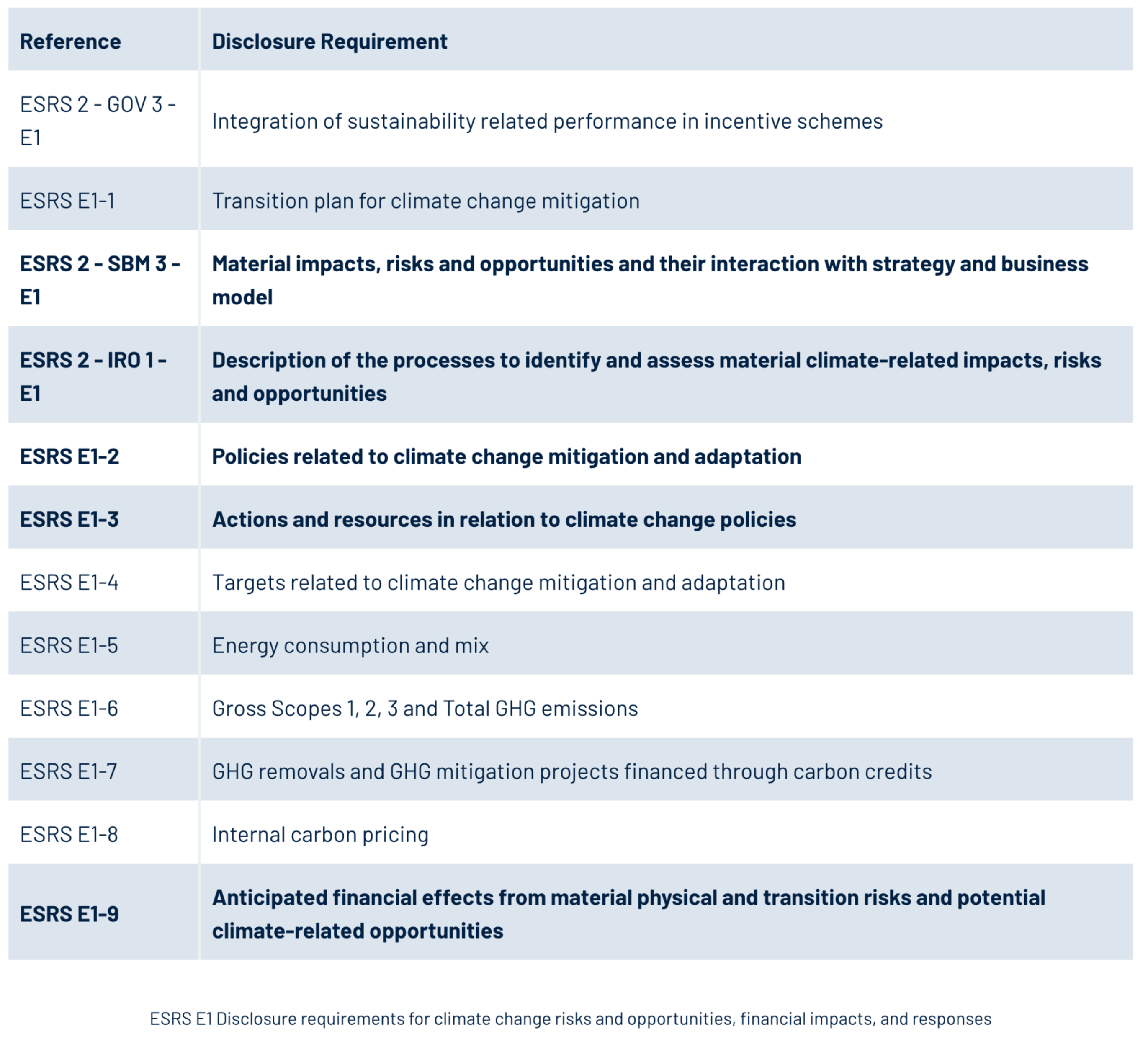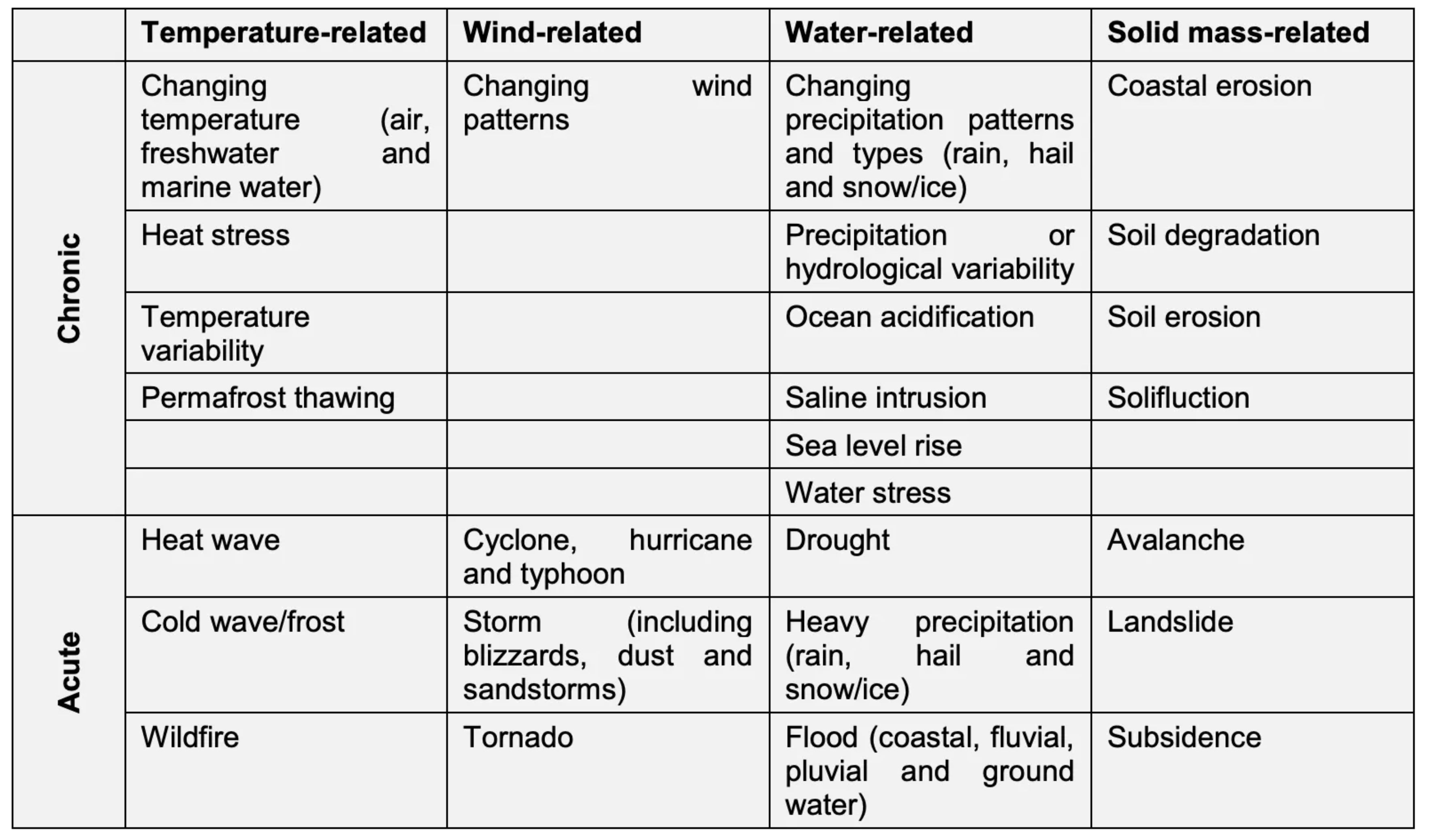CSRD Compliance: Navigating the CSRD with Physical Climate Risk Data and Financial Impact Metrics

As climate action becomes a top priority for consumers, investors, and governments worldwide, integrating sustainability into core business operations is essential.
The CSRD, succeeding the Non-Financial Reporting Directive (NFRD), provides a comprehensive framework for companies to disclose their environmental and social impacts, evaluate strategic and financial implications, and communicate their responses. The first set of CSRD standards includes two cross-cutting standards and ten topical standards, requiring companies to report against them through a double materiality assessment.
Here, we focus on the Climate Change topical standard of the CSRD, known as ESRS E1. We explore the requirements for identifying and assessing climate change risks and opportunities and how to integrate them into business resilience planning.

Leveraging Sust Global’s unique geospatial AI-powered physical climate risk data and financial impact metrics – specifically structural damage and business interruption – can be instrumental in this journey towards compliance.
Understanding the CSRD Standards
The CSRD’s standards are divided into cross-cutting and topical categories:
Cross-Cutting Standards: Provide overarching guidelines applicable across various sustainability topics.
Topical Standards: Specific to particular areas such as climate change, biodiversity, and social matters.
 Quantifying Financial Impacts: A Phased Approach
Quantifying Financial Impacts: A Phased Approach
ESRS E1 requires companies to quantify the anticipated financial impacts of climate risks and opportunities. This involves disclosing how these factors could affect financial positions, performance, and cash flows over time.
Challenges:
Uncertainties in climate scenarios
Complexities in business strategy alignment
Need for cross-departmental collaboration
Phased-In Approach: Recognizing these challenges, the CSRD allows for qualitative disclosures for the first three years, providing companies time to develop robust quantification methods.
Sust Global’s Solution: Our advanced geospatial AI facilitates the quantification of financial impacts by providing high-resolution climate risk data. This empowers businesses to make informed decisions and enhances transparency for investors and stakeholders.
Integrating Risks and Opportunities into Business Strategy
Beyond identification and assessment, ESRS E1 mandates companies to disclose their responses to climate-related risks and opportunities, including:
Climate Mitigation and Adaptation Policies
Actions and Resource Allocation
Transition Plans Aligned with a 1.5°C Pathway
Thinking about Building Adaptation
According to the EU Extended Environmental Taxonomy (a 2022 document that acts a pre-cursor to CSRD), when people think about building renovations with an expected lifespan of less than 10 years, it’s crucial to consider how physical climate risks might affect the building’s performance. The process involves three key steps:
First, screen the renovation activity to identify which physical climate risks—such as flooding, extreme heat, or heavy snowfall—could impact the building during its expected lifetime. For small projects, this assessment can use climate projections at the most localized scale.
Second, if risks are identified, conduct a climate risk and vulnerability assessment to evaluate the significance of these risks. This helps determine which risks are most material to the building’s performance and longevity.
Third, assess adaptation solutions that can mitigate the identified risks. Architects or construction professionals should not only perform these assessments but also propose and integrate adaptation measures into the renovation. Examples include raising electrical outlets and installing water-resistant flooring to protect against floods, reinforcing roofs to handle additional snow loads, and improving ventilation systems to cope with extreme heat.
An adaptation plan should be developed to implement these solutions over a period of up to five years. Upon completion, professionals can issue a certificate of compliance with the “Do No Significant Harm” (DNSH) criteria, either as part of the energy efficiency upgrades or independently. This certification enhances the building’s climate resilience and can be instrumental in securing green mortgages or other sustainable financing options.
Even if ongoing monitoring isn’t feasible for small buildings, incorporating climate risk assessments and adaptations during renovation is vital. This “amber transition” helps prevent significant harm related to climate change adaptation objectives and can be seamlessly integrated into renovations undertaken for other purposes, providing long-term benefits to building owners.
Sust Global’s Solution
By utilizing our climate data integrations, businesses can seamlessly incorporate climate considerations into their strategic planning. Our tools enable the development of actionable transition plans and the monitoring of progress towards sustainability targets.
Future-Proofing with Sust Global’s Climate Solutions
The CSRD is more than a disclosure regulation; it’s a catalyst for business transformation in the face of climate change. Complying with ESRS E1’s climate risk disclosure requirements may be complex, but with Sust Global’s innovative solutions, companies can navigate this journey effectively.
Why Choose Sust Global:
Data you can trust: Our cutting-edge Geospatial AI powers precise physical climate risk models.
Composable Climate Data: Easily integrate our data into your systems for streamlined analysis.
Ease of Use: Our integrations are designed for effortless adoption, reducing implementation time.
By partnering with Sust Global, businesses not only work towards CSRD compliance but also position themselves at the forefront of sustainability, resilience, and innovation.

Conclusion
Integrating sustainability into core business strategies is imperative in today’s climate-conscious world. The CSRD’s ESRS E1 standard provides a comprehensive framework for assessing and disclosing climate-related risks and opportunities.
With Sust Global’s unique geospatial AI and composable climate data integrations, companies can efficiently meet these requirements, future-proof their operations, and contribute positively to the global low-carbon transition.
Get Started with Sust Global
Ready to take the next step in your sustainability journey? Contact us to learn how our solutions can empower your business to meet CSRD requirements and thrive in a changing climate.